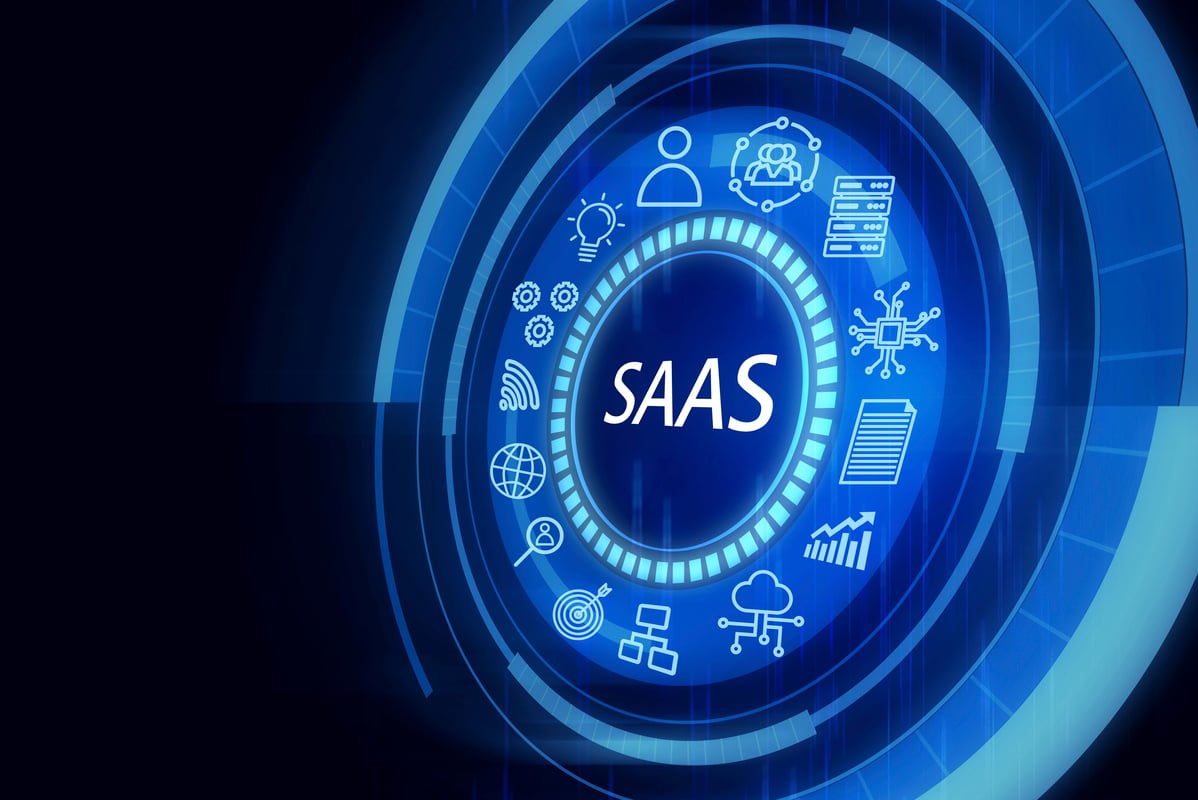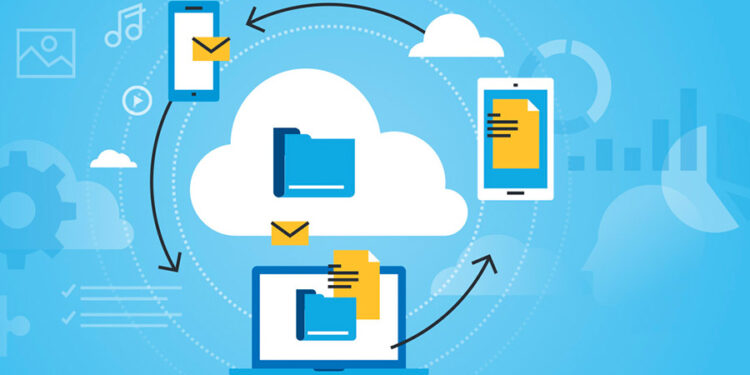The software industry has undergone a seismic shift in the past two decades. The era of bulky, on-premises software that required a significant upfront investment and a team of IT professionals to manage is a relic of the past. Today, the dominant model is Software as a Service (SaaS), a cloud-based delivery model where software is licensed on a subscription basis and accessed via the internet. However, the SaaS revolution is far from over. The Future of SaaS is a dynamic and evolving frontier, continually reshaped by new technologies, changing business models, and a deeper focus on the customer experience. This article will provide a comprehensive look into the transformative trends that are defining the next generation of SaaS. We’ll explore how artificial intelligence, data analytics, and a new emphasis on vertical integration are creating a more intelligent, personalized, and efficient digital world. We will also delve into the strategic implications for businesses, developers, and consumers, offering a clear roadmap for navigating this new era of innovation.
The Evolution from Product to Platform

The first generation of SaaS was defined by the delivery of a single software product. The future, however, is a departure from this product-centric view. It’s about building a holistic platform that integrates with a wide range of other services and provides a complete solution for a customer’s business needs.
A. The Rise of the “Platform as a Service” (PaaS) Model: The line between SaaS and PaaS is blurring. SaaS companies are increasingly building out a platform with a rich ecosystem of third-party integrations and APIs.
- Ecosystem and Integrations: A SaaS platform is no longer a walled garden. It is a hub for a wide range of services, from a customer relationship management (CRM) platform that integrates with a marketing automation tool to a project management platform that integrates with a communication tool. This ecosystem of integrations provides a customer with a more complete and powerful solution.
- APIs and Customization: A SaaS platform’s APIs (Application Programming Interfaces) are a key part of this. They allow a customer to build their own custom integrations and to extend the platform’s functionality to meet their specific needs. This customization is a major driver of customer loyalty and a key part of a new, platform-centric business model.
B. AI-Powered SaaS: The New Era of Intelligence: Artificial intelligence is not just a feature in a SaaS product; it is the driving force behind a new era of intelligence.
- Predictive Analytics: AI can be used to analyze a customer’s data and to provide a new level of insights. For example, an AI-powered CRM can predict which customers are at risk of leaving, or a marketing automation tool can predict which marketing campaign will be the most effective.
- Automated Workflows: AI can also be used to automate a wide range of business workflows. A project management tool can, for example, use AI to automatically assign a task to the right person, or a customer service tool can use AI to automatically answer a customer’s question. This new era of automated workflows is a game-changer for business efficiency.
C. The Shift from “Product” to “Solution”: The future of SaaS is a shift from selling a product to selling a complete solution.
- Vertical Integration: The first generation of SaaS was defined by a horizontal approach, where a single product was sold to a wide range of industries. The future is a departure from this, with a new focus on a vertical, or industry-specific, approach. A SaaS company will, for example, build a complete solution for the healthcare industry, with a rich ecosystem of integrations and a deep understanding of the industry’s specific needs and regulations.
- The “Customer-Centric” Approach: This new, solution-centric approach is a reflection of a new emphasis on a customer-centric business model. The focus is on a customer’s complete journey, from their initial interest to their long-term success.
The New Business Models of SaaS
The traditional SaaS business model, a simple subscription, is evolving into a more complex and nuanced model. The future of SaaS is a story of a new era of monetization and a deeper focus on customer success.
A. Usage-Based Pricing: The subscription model is being challenged by a new pricing model: “usage-based pricing.”
- Fairness and Transparency: A usage-based pricing model, where a customer only pays for what they use, is seen as more fair and transparent than a traditional subscription. This is a major advantage for a SaaS company that is trying to build trust with its customers.
- Scalability and Flexibility: A usage-based pricing model is also more scalable and flexible. A customer can start with a small, low-cost plan and then scale up as their business grows. This is a major advantage for a SaaS company that is trying to attract small and medium-sized businesses.
B. The “Freemium” Model: The “freemium” model, where a SaaS company offers a basic, free version of its product and then charges for a premium version, is also evolving.
- Product-Led Growth: The freemium model is a key part of a new, “product-led growth” business model. The product itself is the primary tool for customer acquisition and growth.
- Data-Driven Insights: A SaaS company can use the data from its free users to gain a deeper understanding of their needs and to provide a more personalized and effective experience. This is a powerful tool for a SaaS company that is trying to build a new, customer-centric business model.
C. The “Customer Success” Imperative: The future of SaaS is a shift from a focus on “customer acquisition” to a focus on “customer success.”
- Customer Retention: The cost of acquiring a new customer is often much higher than the cost of retaining an existing one. A SaaS company’s success is increasingly being measured by its customer retention rate.
- A Proactive Approach: Customer success is not a reactive process. It is a proactive one, where a SaaS company uses data and a customer success team to identify potential problems and to provide a solution before the customer is even aware of the problem.
D. The Role of the Ecosystem: A SaaS company’s success is no longer just about its own product; it is also about the success of its ecosystem.
- Shared Revenue: A SaaS company can, for example, create a shared revenue model with its third-party integrations, where both the SaaS company and the integration partner share in the revenue from a new customer.
- A Platform for Innovation: A SaaS company’s platform is a powerful engine for innovation. It provides a platform for a new generation of startups and developers to build new applications and services.
The New Challenges of the SaaS World

While the future of SaaS is a story of a new era of innovation, it also introduces a new set of challenges that businesses must be prepared to address.
A. Security and Data Privacy: The collection and use of customer data is at the heart of the SaaS business model, but it also presents a significant legal and ethical risk.
- GDPR and CCPA: Regulations like the EU’s GDPR and California’s CCPA have set a high bar for data privacy. A SaaS company must be in compliance with all relevant regulations, and a failure to do so can result in massive fines.
- Cybersecurity Breaches: The data that a SaaS company collects from its customers is a prime target for hackers. A data breach can lead to lawsuits, regulatory fines, and a massive loss of customer trust. The future of SaaS will be defined by a new emphasis on cybersecurity and a deep commitment to protecting customer data.
B. Competition and the “Ecosystem” Battle: The SaaS market is becoming increasingly competitive.
- The “Platform” Wars: The battle for customer loyalty is shifting from a battle of products to a battle of platforms. A SaaS company’s success is increasingly being measured by the strength of its ecosystem and its ability to provide a complete solution for a customer’s business needs.
- The “Vertical” Challenge: The new focus on vertical integration is creating a new challenge for SaaS companies. A company that is an expert in one industry may not be able to compete in another. This is leading to a new era of mergers and acquisitions, where a SaaS company is acquiring other companies to build out its platform and its ecosystem.
C. Talent and Expertise: The talent and expertise required to build and manage a successful SaaS company are changing.
- AI and Data Science: The new era of AI-powered SaaS requires a new set of skills, including expertise in AI, machine learning, and data science.
- Customer Success: The new emphasis on customer success is creating a new demand for a new type of professional: a “customer success manager” who is an expert in helping a customer to be successful.
D. The “Digital Citizen” vs. The “Digital Business”: The future of SaaS is also a story of a new legal and ethical challenge.
- The “Black Box” Problem: The “black box” nature of many AI systems, where it is difficult to explain how a decision was made, is a major ethical and legal challenge for a SaaS company that is using these systems to make a business decision.
- Algorithmic Bias: If an AI system that is used in a SaaS product is biased, the SaaS company can be held liable. The future of SaaS will be defined by a new push for “explainable AI,” or AI systems that can explain their decisions in a way that is understandable to a human.
The Strategic Roadmap for the Future of SaaS
Successfully navigating the future of SaaS is not a one-time project; it is a strategic roadmap that requires a commitment to continuous learning and a cultural shift.
A. Build a Platform, Not a Product: The future of SaaS is a platform-centric one.
- A Rich Ecosystem: A SaaS company must build a rich ecosystem of third-party integrations and APIs.
- A Developer Platform: A SaaS company’s platform should be a platform for a new generation of startups and developers to build new applications and services.
B. Embrace AI and Data Analytics: The future of SaaS is an intelligent one.
- AI for Optimization: A SaaS company should use AI to optimize its internal operations and to provide a new level of insights to its customers.
- A Data-Driven Business Model: A SaaS company should have a data-driven business model where every decision is guided by data.
C. Focus on Customer Success: The future of SaaS is a customer-centric one.
- A Customer Success Team: A SaaS company should invest in a customer success team that is focused on helping its customers to be successful.
- A Proactive Approach: A SaaS company should have a proactive approach to customer success, where it uses data to identify potential problems and to provide a solution before the customer is even aware of the problem.
D. Prioritize Security and Privacy: The future of SaaS is a trustworthy one.
- A Clear Privacy Policy: A SaaS company must have a clear and easy-to-understand privacy policy that is in compliance with all relevant regulations.
- Robust Cybersecurity: A SaaS company must invest in a robust cybersecurity system to protect its customer’s data from a breach.
E. Embrace Vertical Integration: The future of SaaS is a new era of vertical integration.
- A Strategic Focus: A SaaS company should have a strategic focus on a specific industry, with a deep understanding of the industry’s specific needs and regulations.
- A Complete Solution: The goal is to build a complete solution for a customer’s business needs, with a rich ecosystem of integrations and a new level of intelligence.
Conclusion
The Future of SaaS is a story of a new era of software, one that is more intelligent, more personalized, and more efficient. The challenges are immense, from the ethical implications of algorithmic bias to the legal complexities of data privacy. However, the opportunity is even greater: to build a more resilient, more secure, and more innovative digital world. The decisions we make today will not only shape the future of SaaS but also define our relationship with data, technology, and the very concept of a digital business. The future of software is here, and it is a new era of platform-centric innovation, technological adaptation, and a deep commitment to building a product that is designed for the future.











